‘As do so many more universal myths, Permindar Kaur’s cast of animal and humanlike creatures acts out elements of profoundly recognisable fears and needs: protection, disguise, identity, restraint, belonging, and survival.’
Gill Hedley
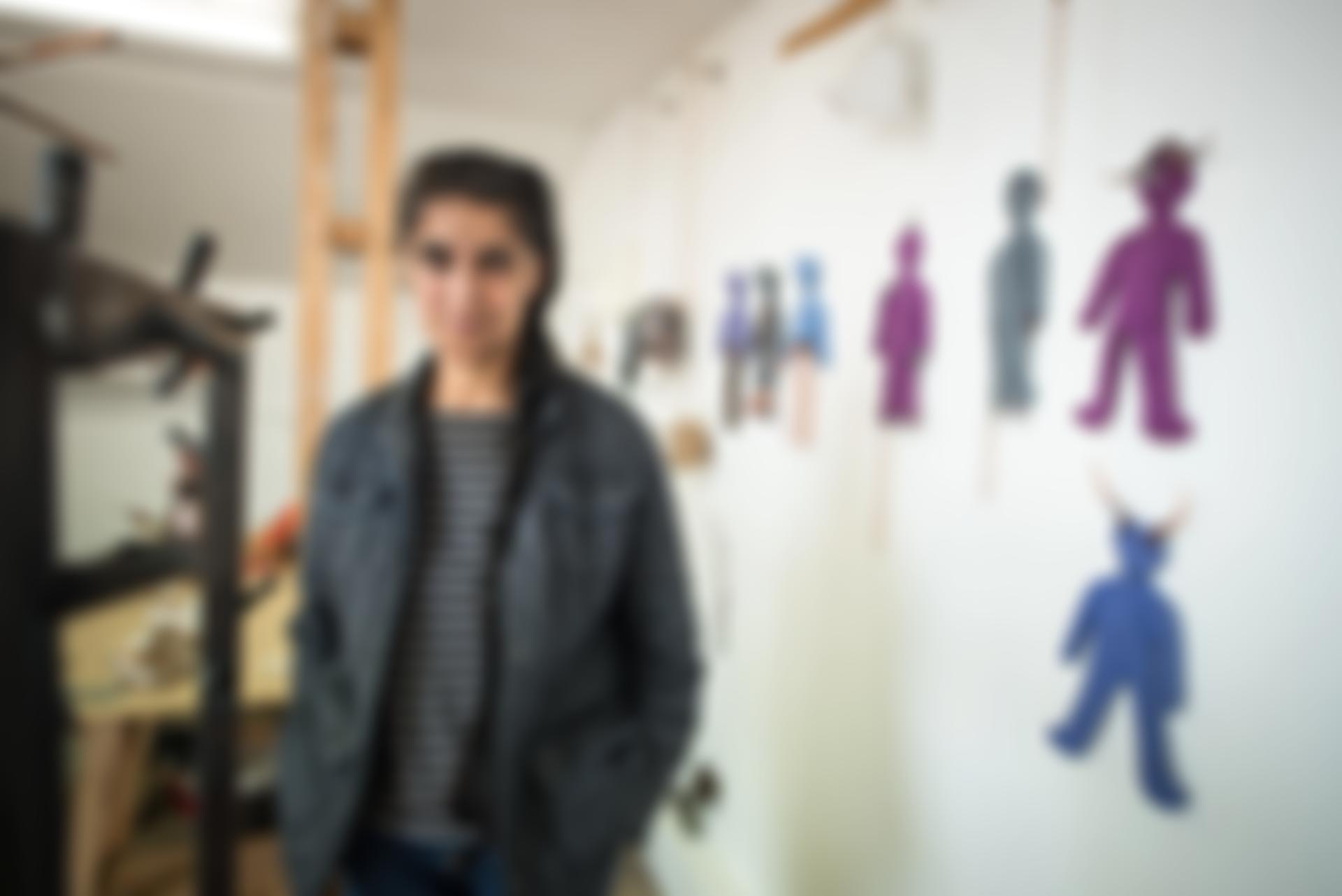
IN THE STUDIO WITH PERMINDAR KAUR
I am by nature playful in how I approach my work in the studio. I use childlike objects to explore childhood and cultural identity—simple forms such as beds, cots, chairs, and toys— but I subtly and overtly distort them to invoke the uncanny.
The objects around us are what inform and shape who we are and who we become. My practice started with toys and objects that were a mix of my British and Indian heritage. I didn’t want to use real objects as that would place them too firmly in the world we experience here and now, so I made simple representations of objects out of clay and wood, developing my own visual language.
Visibility and vulnerability
Over the last decade, my practice has shifted towards animal forms, work that includes figures with long claws, horns and antlers. The series Camouflage, is in many ways about ‘fitting in’. In these textile landscapes, where a clawed figure was made from the same material as the background, there is a sense of futility and it’s evident that the figures are hopelessly failing to blend in to the surface. They choose to hide out among the colours of their temporary habitat, keeping their spikes as a last-ditch defence when on the move.
I’m always drawing in a sketchbook. The best way is when I draw something, and I look at it, and I think: ‘Yes, that’s what I want to make,’ and it’s almost fully worked out in my mind.

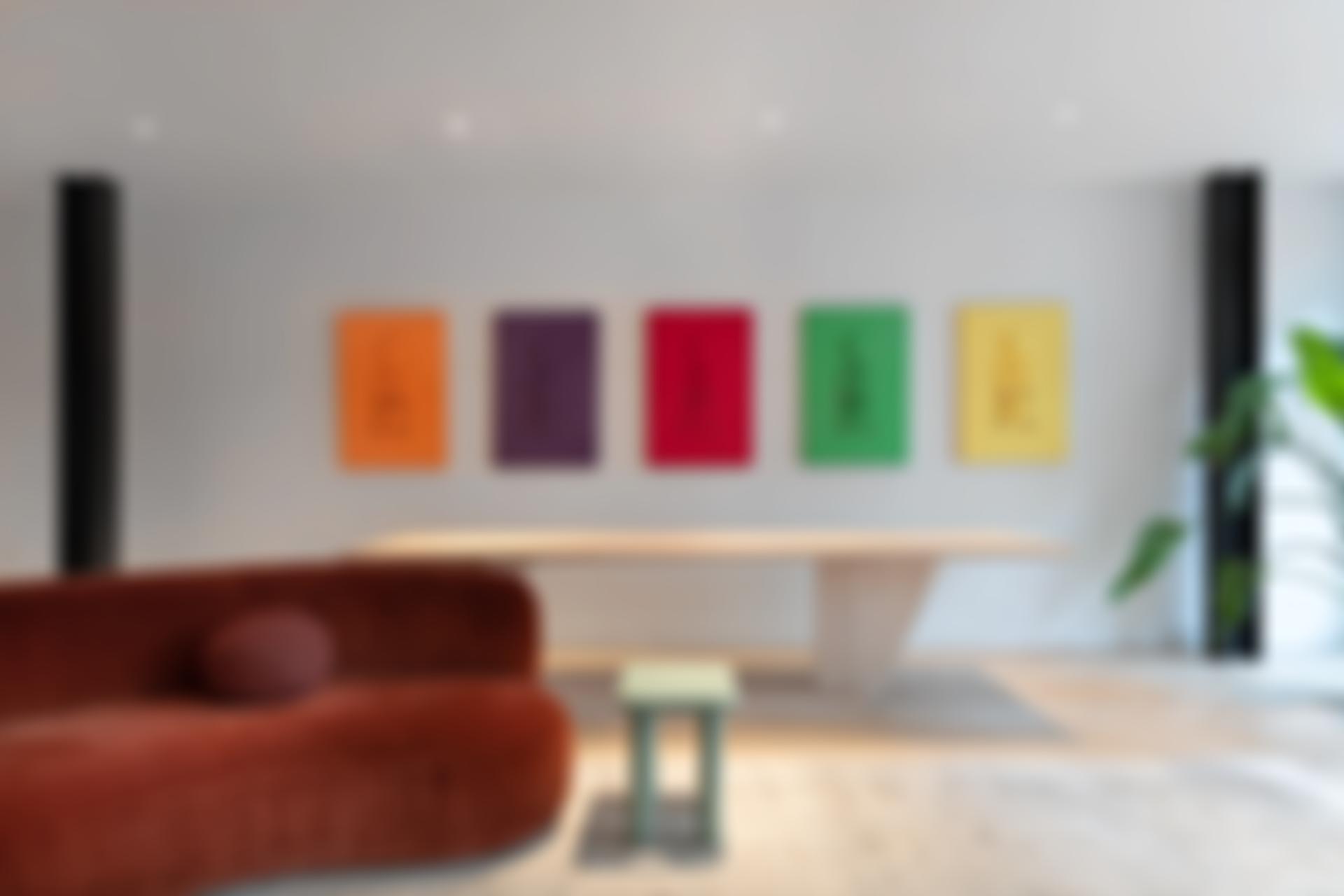
My intention is to play with ambiguities so that one is never quite sure of the identity, or origin of my objects, and to try to avoid the artwork having a predetermined, or closed, meaning.
Ultimately, that’s what allows the work to be both familiar and unknown – often with confusing and slightly uncanny qualities.
HARD AND SOFT
I want the work to have a duality between being playful and being disturbing. The greatest difficulty is getting the balance right, leaving it open enough for viewers to make up their own minds. To achieve this, I often limit myself to using two contrasting materials—the lightness and vibrancy of coloured fabrics against the cold, hard, and heavy contours of metal.
Cloth and metal are very different primary materials that require specialised methods of preparation and construction. I have developed a level of skill with welding and sewing, so I have the freedom to make what I want while continuing to experiment. I use textiles as I would metal to construct solid forms, to play with the hard and soft, co-joining two opposing materials in harmony to explore the relationship between them, to question aspects of safety, protection, and defence.

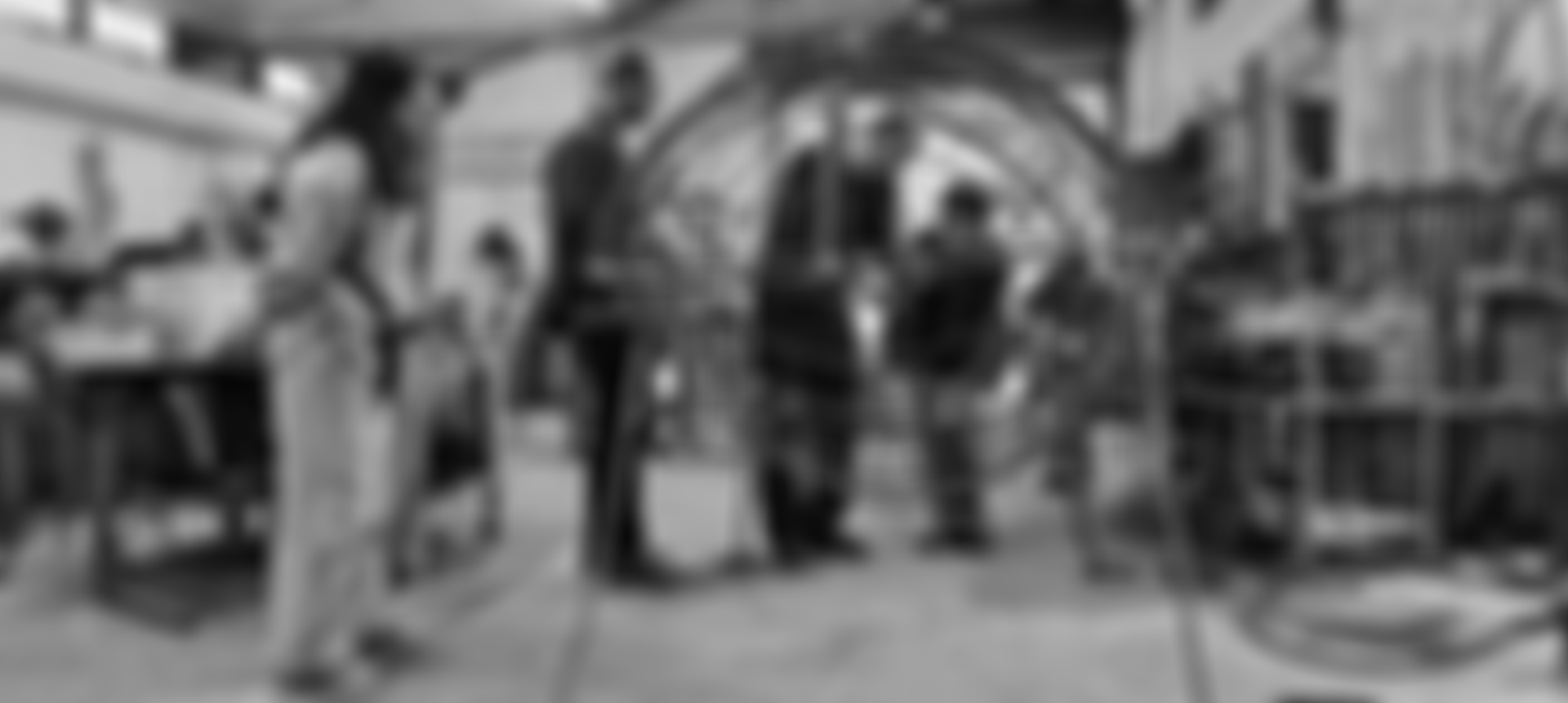
PROTECTOR AND PROTECTED
When I use clawed creatures or soft teddy bears, the notion of who is the protector and who is protected is up to the viewer to decide. I feel that the audience brings their own narrative to the work deciding whether to see them as friends or foes.
The fabrics I use vary from satin and cotton to bonded felt. But most of the time I like using plain fabrics. Another material I discovered, whilst on a residency at Banff, Canada in the mid 90s, was polar fleece. I became excited about this fabric as, apart from the amazing colours it came in, I discovered that it was made from recycled plastic bottles. I liked that it was soft and insulating like a blanket and could be incorporated into the themes about protection that I was working on.

SCALE AND DIFFERENCE
Untitled - 3 Figures, 2013, features similar animal-like forms but this series explores scale, awkwardness, and difference.
The three large grey figures are squashed into canvases too small for them. One has large horns, the other antlers, but the third has no sharp protrusions. The figure is slumped over, seemingly drained of life as well as colour. We are left pondering what this figure is missing – horns, antlers or something completely different.
Scale is important because it changes the way the viewer sees the work. If it’s small, then it’s more vulnerable, so you become protective of it. If it’s large, then you are made to feel vulnerable yourself.
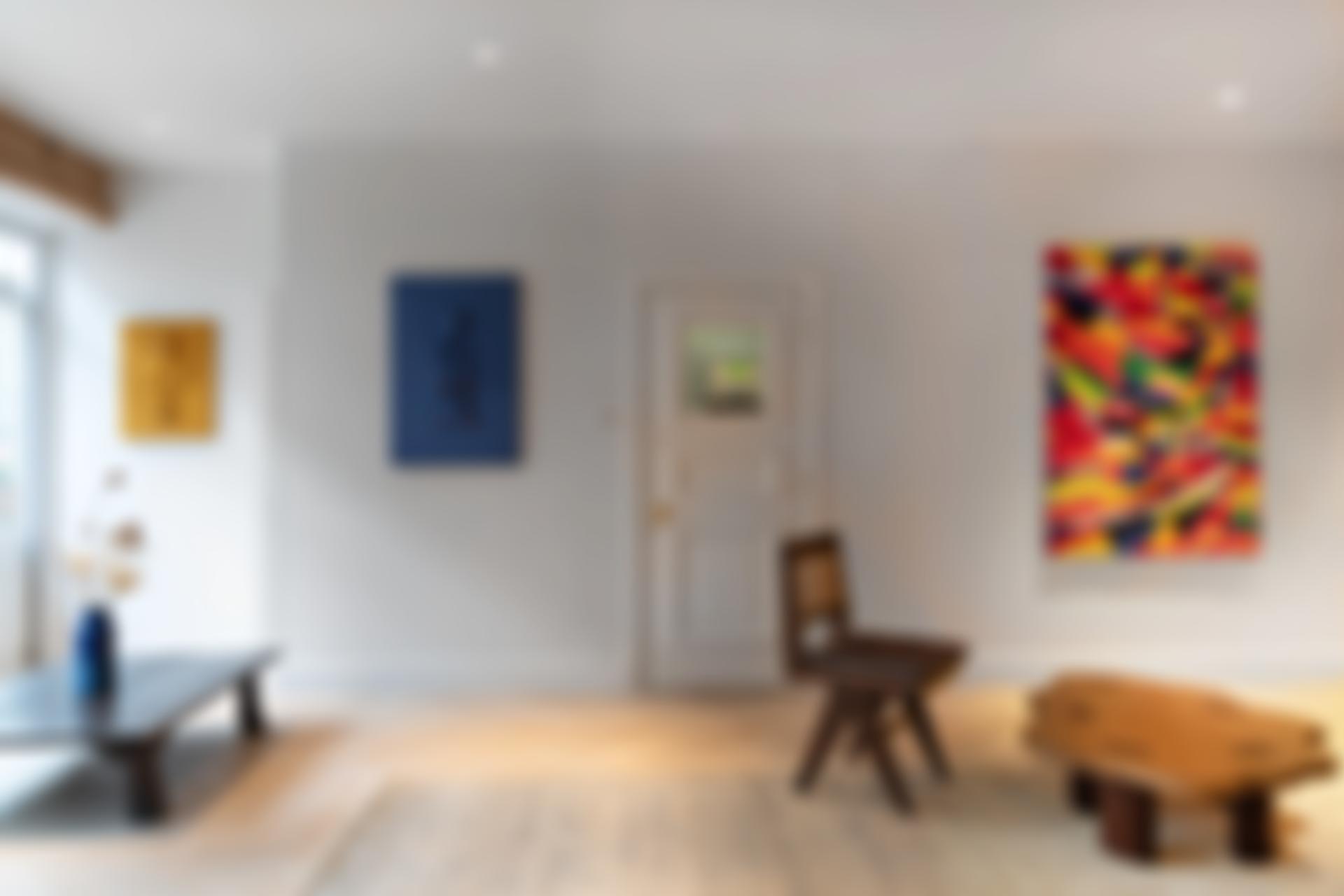
‘Over three decades, Permindar’s work has consistently explored the human condition, who we are and where we belong. Her signature polar-fleece sculptures combine the innocence of cuddly toys with an underlying threat or vulnerability. These creatures ‘stand in’ for us replicating the behaviours, emotions, fears, thrills and instincts with which we negotiate our lives.’
Annabel Lucas

Permindar Kaur speaks to Hettie Judah for Studio International on occasion of her exhibition, Outgrown, at The Art House, Wakefield in September 2022. Watch an extract of this conversation below.
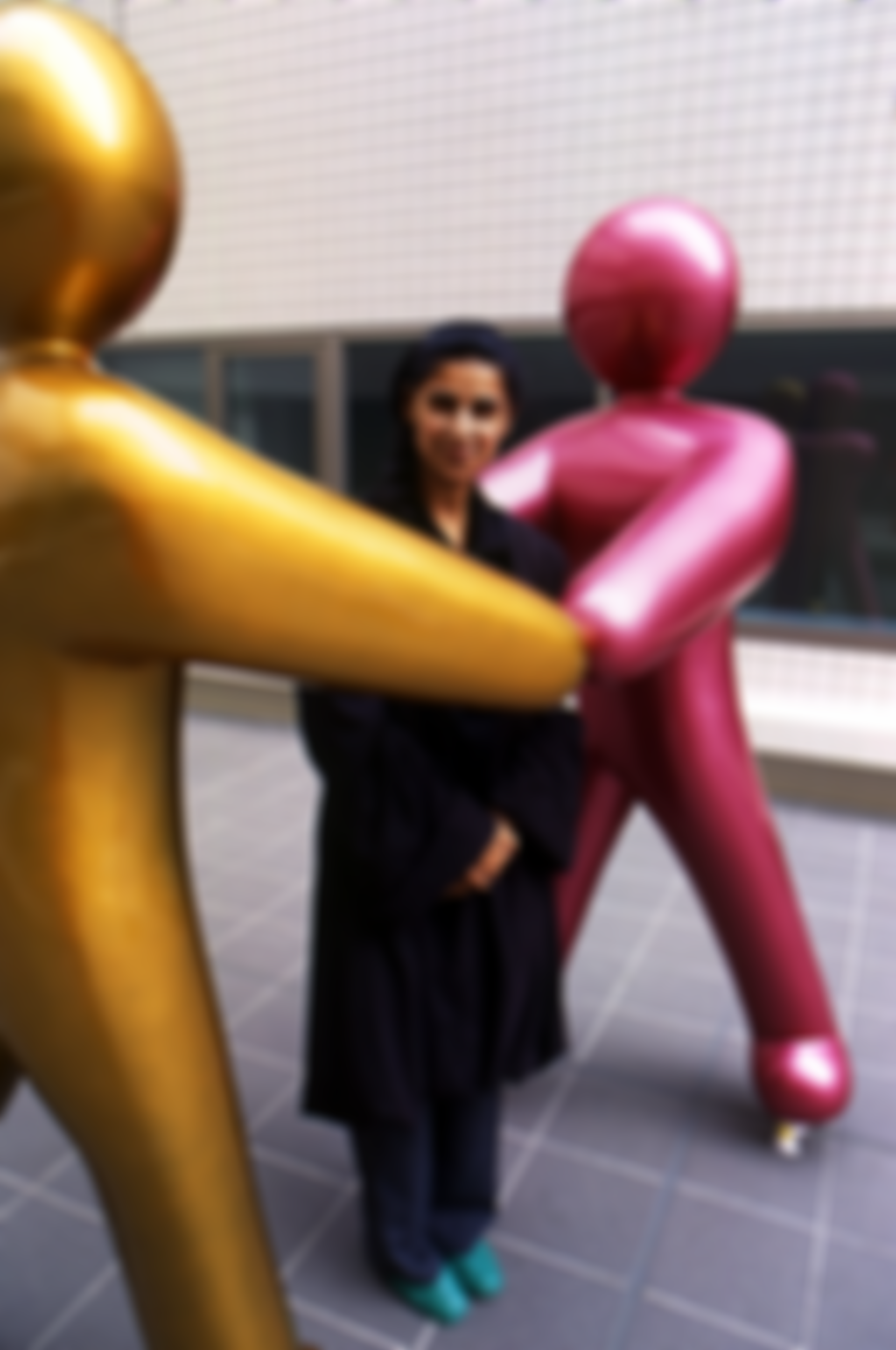
BIOGRAPHY
Permindar Kaur’s (b.1965, Nottingham. Lives and works in St. Albans) sculpture and installation work is characterised by an enigmatic use of materials, scale and symbolism. Since the 1990s she has explored themes of cultural identity, home and belonging by invoking childhood and domestic spaces.
Kaur received her B.A. Hons Fine Art from Sheffield City Polytechnic in 1989 and a MFA from Glasgow School of Art, Scotland in 1992.
Her work has been exhibited widely in solo and group shows internationally, including: The Hepworth Wakefield (2023); University of Cambridge (2022); The Art House, Wakefield (2022, solo); Breaking the Mould: Sculpture by Women since 1945, Yorkshire, Wakefield, Nottingham, Plymouth, Walsall (2021-23); The Royal Academy, London (2021); Ikon, Birmingham (2021); 5 Howick Place, London (2020-21, solo); Turner Contemporary, Margate (2018); University of Hertfordshire (2016); Djanogly Gallery, Nottingham (2014, solo); Tate Britain, London (2000); Shizouka Arts Centre (1999); Museum of Contemporary Art, Sydney (1997); Mead Gallery, Coventry (1996, solo); The British Art Show 4, Manchester, Edinburgh, Cardiff (1995).
Permindar Kaur’s work forms part of many public collections, including Arts Council, London; British Council, UK; Cartwright Hall, Bradford; New Art Hall Collection, Cambridge; Museu de Reus; Nottingham Castle Museum.
She was shortlisted for the Freelands Award 2022 for a solo show at John Hansard Gallery in Southampton.
